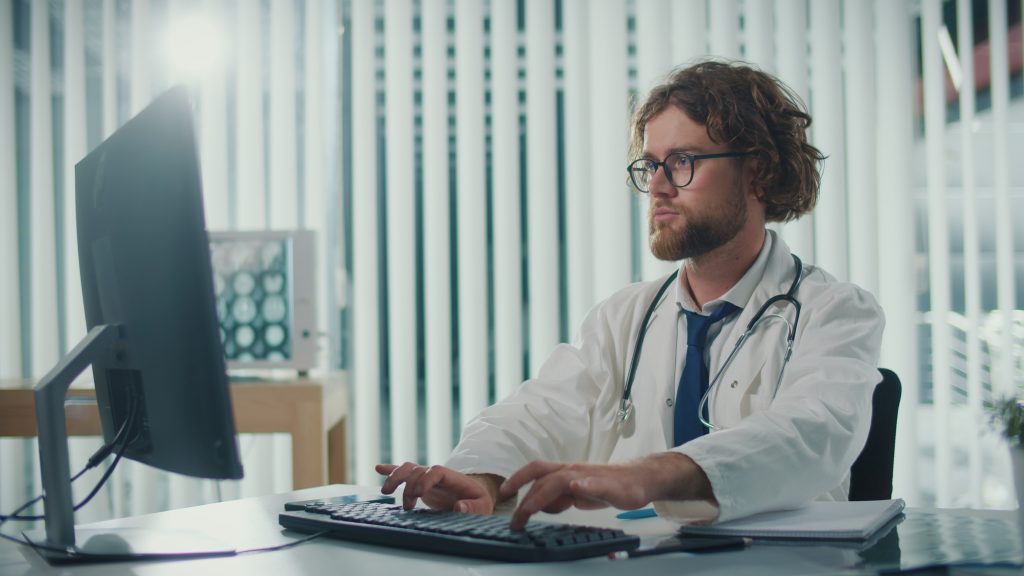Provider Support Services
Empower your care with tools that work as hard as you do—so you can focus on patients, not the process.

Remote Patient Monitoring: Made Simple
Getting started with Nowrpm takes just a few minutes—no complicated setup, no tech skills required.
Who is Nowrpm designed for?
Nowrpm is built for primary care practices and outpatient clinics that manage patients with chronic conditions outside of hospital settings. Our platform supports providers in extending care beyond in-person visits, allowing patients to stay connected and monitored from the comfort of their homes.
Which providers can use Nowrpm?
Any Medicare-participating provider with an active National Provider Identifier (NPI) can enroll. That includes physicians, nurse practitioners, physician assistants, and other licensed clinicians recognized under Medicare’s RPM guidelines.
What do my patients need to do?
Once your patient is enrolled, we’ll confirm their shipping details and deliver a fully configured device to their door. From there, all they need to do is use the device as directed—typically once a day or according to their care plan. No setup or manual syncing required.
Which patients are eligible?
Patients who have been diagnosed with at least one chronic condition and have provided consent are eligible for the RPM program. Nowrpm helps identify and enroll qualifying individuals seamlessly through your practice’s workflow.
Will my patients be charged?
No, patients do not pay for devices, shipping, or supplies. Remote patient monitoring is typically covered by Medicare. Depending on individual coverage, a small co-pay or deductible may apply
How Remote Patient Monitoring Works with Nowrpm?
Remote Patient Monitoring (RPM) allows care teams to keep track of a patient’s health without needing them to visit the clinic. Using connected devices like blood pressure cuffs or weight monitors, patients record their vitals from home—and the data is shared securely with their provider in real time.
This approach is especially valuable for patients managing chronic conditions, recovering at home, living in rural areas, or facing mobility challenges.
Nowrpm makes RPM effortless—for both providers and patients—by handling everything from setup to support. Medicare supports and reimburses providers for using RPM, helping shift care from reactive to proactive.


What is the Nowrpm Platform?
Nowrpm is a connected care solution designed to help providers monitor patients with chronic conditions—right from their homes. It’s especially helpful for aging patients or those who benefit from consistent oversight without frequent clinic visits.
With zero setup required, our devices arrive pre-configured and ready to use. They transmit data over a built-in cellular network—no Wi-Fi, apps, or Bluetooth pairing needed.
Nowrpm helps practices deliver better care while improving practice revenue—all at no cost to the patient or provider.
All-in-One, Without the Overload
More insights shouldn’t mean more effort. Nowrpm delivers the data you need—clearly, securely, and right when it matters. Our platform is built to simplify remote care for both providers and patients, so you can stay focused on outcomes, not extra admin.

Patient Setup
We handle identification, outreach, and onboarding. Your team focuses on care, not cold calls.

Virtual Assistant
Motivational nudges, friendly reminders, and milestone recognition keep patients on track.

Live Reporting
See real-time patient vitals and engagement patterns from one secure dashboard.

Smart Monitoring
Let Iris handle the daily check-ins. Your team gets notified only when something truly matters.

EHR Integration
Data flows directly into your systems—securely and seamlessly—giving clinicians a complete care picture.
Need Help?
Frequently Asked Questions
What is a Remote Patient Monitoring (RPM) device?
RPM devices are tools that track your health at home — such as blood pressure cuffs, glucose monitors, or pulse oximeters — and securely share that information with your care team in real time.
How do I use my RPM device?
Each device comes with simple instructions. Most devices are Bluetooth or cellular-enabled, so you just take your reading as usual and the result is automatically sent to your provider.
Do I need Wi-Fi or a smartphone?
Some devices connect through Wi-Fi or Bluetooth to an app, while others have built-in cellular service. Your provider will recommend the best option for your situation.
What should I do if my device isn’t working?
First, check the batteries and make sure the device is turned on. If you’re still having issues, refer to our Device Support Guides or contact our support team for help.
Who reviews my readings?
Your healthcare team monitors your results regularly. They may reach out if a reading looks unusual or if follow-up care is needed.
How RPM Billing Works?
Remote monitoring must involve real-time communication:
At least one direct interaction—like a phone or video call—is required each month to qualify for time-based billing.Only one claim for devices per patient per month:
Even if a patient uses more than one device, billing for device-related services is limited to once a month.Document medical necessity clearly:
Each patient should have a provider order on file that includes the condition or reason they’re being monitored.Involve your team (with supervision):
Clinical support staff can help with monitoring and communication tasks—as long as a licensed provider oversees the care plan.Keep everything stored in your EHR:
Orders, notes, and time logs should be recorded and easily accessible for compliance and audits.No specific length required for patient calls:
There’s no minimum duration for real-time communication, but it must contribute meaningfully to your care and monitoring efforts.Double-check with billing professionals:
For peace of mind and smooth reimbursement, have your billing team review documentation before claims are submitted.
Ready to Revolutionize Your Remote Care?
One platform to manage monitoring, engage patients, and streamline your workflow—without adding to your team’s workload.
Ready to learn more?
Contact Us
- Indianapolis, Indiana
- +1 317-613-7773
- info@NowRPM.com
